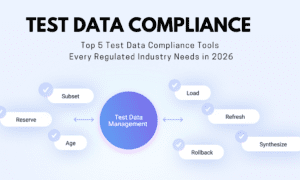Where digital transformation is reshaping every aspect of our lives, the way we vote is no exception. Traditional voting systems, though functional, have been plagued by issues ranging from voter fraud to a lack of transparency. Enter blockchain technology—a revolutionary innovation that promises to address these challenges and pave the way for secure, transparent, and efficient voting systems. This article delves into how blockchain is enabling the future of secure and transparent voting systems, its benefits, and the hurdles it must overcome.
Understanding Blockchain Technology
To appreciate how blockchain can transform voting, it’s crucial to understand what blockchain technology is. At its core, blockchain is a decentralized, distributed ledger that records transactions in a secure, transparent, and immutable manner. Each transaction, or “block,” is linked to the previous one, creating a “chain” of blocks. This technology is the backbone of cryptocurrencies like Bitcoin but has applications far beyond digital currencies.
The Need for Secure and Transparent Voting Systems
Traditional voting systems, whether paper-based or electronic, have faced numerous issues over the years. These include:
Voter Fraud:
Instances of voter impersonation, multiple voting, and ballot stuffing.
Transparency:
Lack of transparency in the voting process can lead to mistrust among the electorate.
Accessibility:
Difficulty in ensuring that all eligible voters, including those with disabilities or living abroad, can vote.
Cost:
High costs associated with conducting elections, especially in large democracies.
Blockchain technology, with its inherent features, offers solutions to these challenges.
Enhanced Security
One of the primary benefits of blockchain technology is its security. Blockchain uses cryptographic techniques to secure data. Once a vote is cast and recorded on the blockchain, it cannot be altered or deleted. This immutability ensures that votes are tamper-proof, significantly reducing the risk of voter fraud.
Additionally, blockchain’s decentralized nature means there is no single point of failure. Traditional voting systems often rely on centralized databases, which are vulnerable to hacking. In contrast, a blockchain-based system would require an attacker to compromise multiple nodes simultaneously, making it exponentially more difficult to tamper with the vote tally.
Transparency and Trust
Transparency is another critical advantage of blockchain-based voting systems. Every vote cast is recorded on the blockchain and can be verified by anyone with access to the network. This transparency ensures that the entire voting process is open to scrutiny, building trust among voters.
For instance, in a blockchain-based voting system, each voter could receive a unique, anonymous identifier. After voting, they could use this identifier to verify that their vote was recorded correctly and included in the final tally. This level of transparency is unprecedented in traditional voting systems.
Improved Accessibility
Blockchain technology can also improve accessibility in voting. By leveraging digital identities and secure online voting platforms, blockchain can make it easier for people to vote remotely. This is particularly beneficial for citizens living abroad, individuals with disabilities, and those in remote areas.
For example, Estonia, a pioneer in digital governance, has already implemented an online voting system that uses blockchain technology. Estonian citizens can vote from anywhere in the world using a secure digital identity, making the voting process more inclusive and convenient.
Cost Efficiency
Conducting elections is a costly affair, with expenses including printing ballots, staffing polling stations, and ensuring security. Blockchain technology can reduce these costs by streamlining the voting process. With a blockchain-based system, there is no need for physical ballots or extensive security measures to protect centralized databases.
Moreover, the efficiency of blockchain technology can lead to faster vote counting and result tabulation. This not only reduces costs but also shortens the time between voting and the announcement of results, enhancing the overall efficiency of the electoral process.
Overcoming Challenges
While the potential benefits of blockchain-based voting systems are significant, several challenges must be addressed before widespread adoption can occur.
Technical Challenges
One of the main technical challenges is ensuring the scalability of blockchain voting systems. Current blockchain networks, such as Bitcoin and Ethereum, have limitations in terms of transaction speed and capacity. For a national election, the blockchain must be capable of handling millions of transactions quickly and efficiently.
Another technical challenge is the development of user-friendly interfaces. For blockchain-based voting systems to be widely adopted, they must be easy to use for people of all ages and technical abilities.
Regulatory and Legal Challenges
The implementation of blockchain-based voting systems also faces regulatory and legal challenges. Election laws vary significantly from country to country, and existing regulations may not accommodate new technologies like blockchain. Policymakers need to create a legal framework that supports the use of blockchain in elections while ensuring the integrity and security of the voting process.
Security Concerns
While blockchain is inherently secure, the surrounding infrastructure, such as digital identities and online voting platforms, must also be secure. Ensuring end-to-end security is crucial to prevent any form of cyberattack that could undermine the voting process.
Case Studies
Several countries and organizations have already begun exploring the use of blockchain technology in voting.
Estonia
Estonia is a global leader in digital governance and has successfully implemented an online voting system. The system uses blockchain technology to ensure the security and transparency of votes. Estonian citizens can vote online using their digital identity cards, which provide a secure and convenient way to participate in elections.
West Virginia, USA
In the United States, West Virginia piloted a blockchain-based voting system for military personnel stationed overseas during the 2018 midterm elections. The system allowed soldiers to vote securely from their mobile devices, ensuring their votes were accurately recorded and counted.
Sierra Leone
In 2018, Sierra Leone conducted a blockchain-based election, becoming the first country to do so. The blockchain technology used in the election ensured transparency and helped prevent any tampering with the votes, demonstrating the potential of this technology in developing countries.
The Future of Blockchain Voting
As blockchain technology continues to evolve, its application in voting systems is likely to expand. Innovations in scalability, security, and user experience will address many of the current challenges, making blockchain-based voting systems more viable for widespread adoption.
Furthermore, as more countries and organizations pilot blockchain voting systems, valuable lessons will be learned, and best practices will be developed. These experiences will pave the way for the refinement and improvement of blockchain-based voting systems.
Conclusion
Blockchain technology holds immense potential to revolutionize the way we vote. By enhancing security, transparency, accessibility, and cost efficiency, blockchain can address many of the challenges faced by traditional voting systems. While there are hurdles to overcome, the progress made so far is promising, and the future of secure and transparent voting systems looks brighter with blockchain technology at the helm.



































